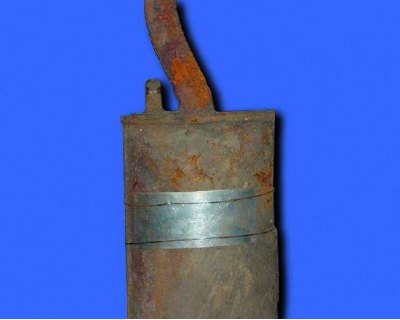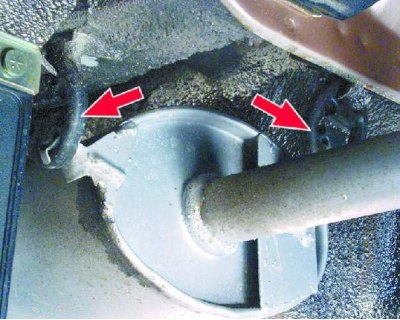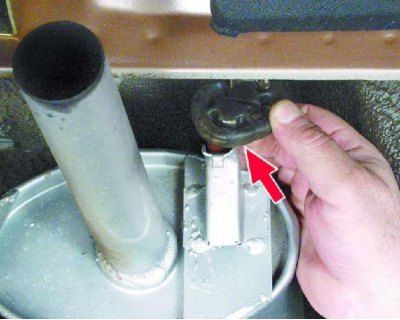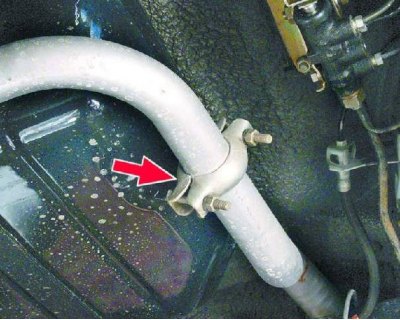To locate the leak, start the engine and inspect the entire system. Pass your hand over the places of possible leakage, without touching the components of the system, as they heat up to a high temperature during engine operation.
Attention! Allow the exhaust system to cool before repairing.
Warning! Exhaust gases are toxic and poisoning by them occurs imperceptibly, so be sure to open the gate before starting the engine in the garage!

1. Carefully inspect the exhaust system. If necessary, replace rusted and burnt parts.

2. If at the moment it is not possible to replace the defective unit, you can temporarily restore its performance by applying a metal patch to the damaged area and securing it with clamps or wire. Place a sheet of asbestos under the patch.

3. Inspect the rubber pads for the muffler and resonator. Replace torn, cracked or loose cushions.

4. To replace the cushion, lift the system assembly (e.g. muffler) and remove the old cushion from the bracket on the body and on the node, then install a new cushion.

5. Inspect and, if necessary, replace the clamps if they are damaged or rusted.
